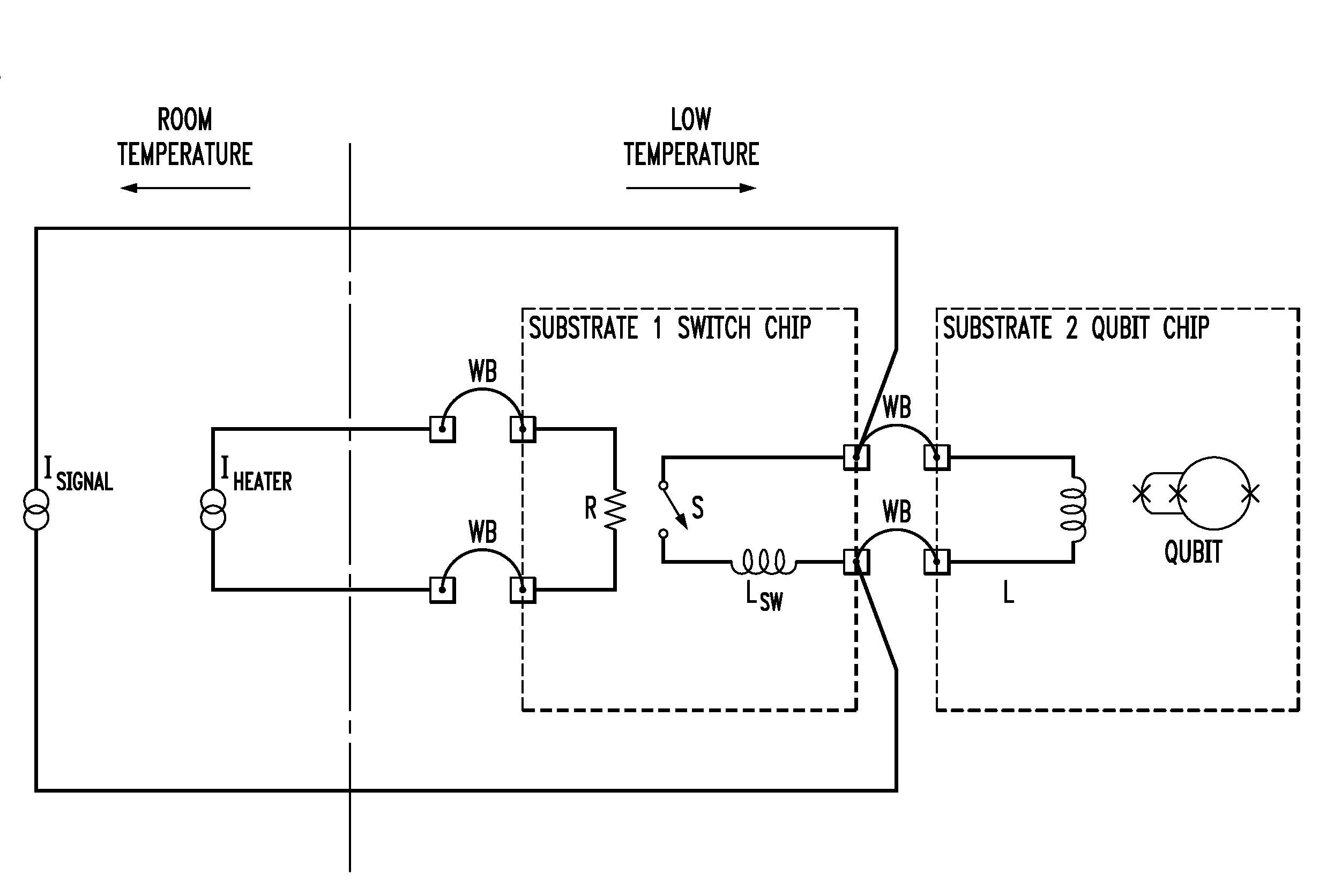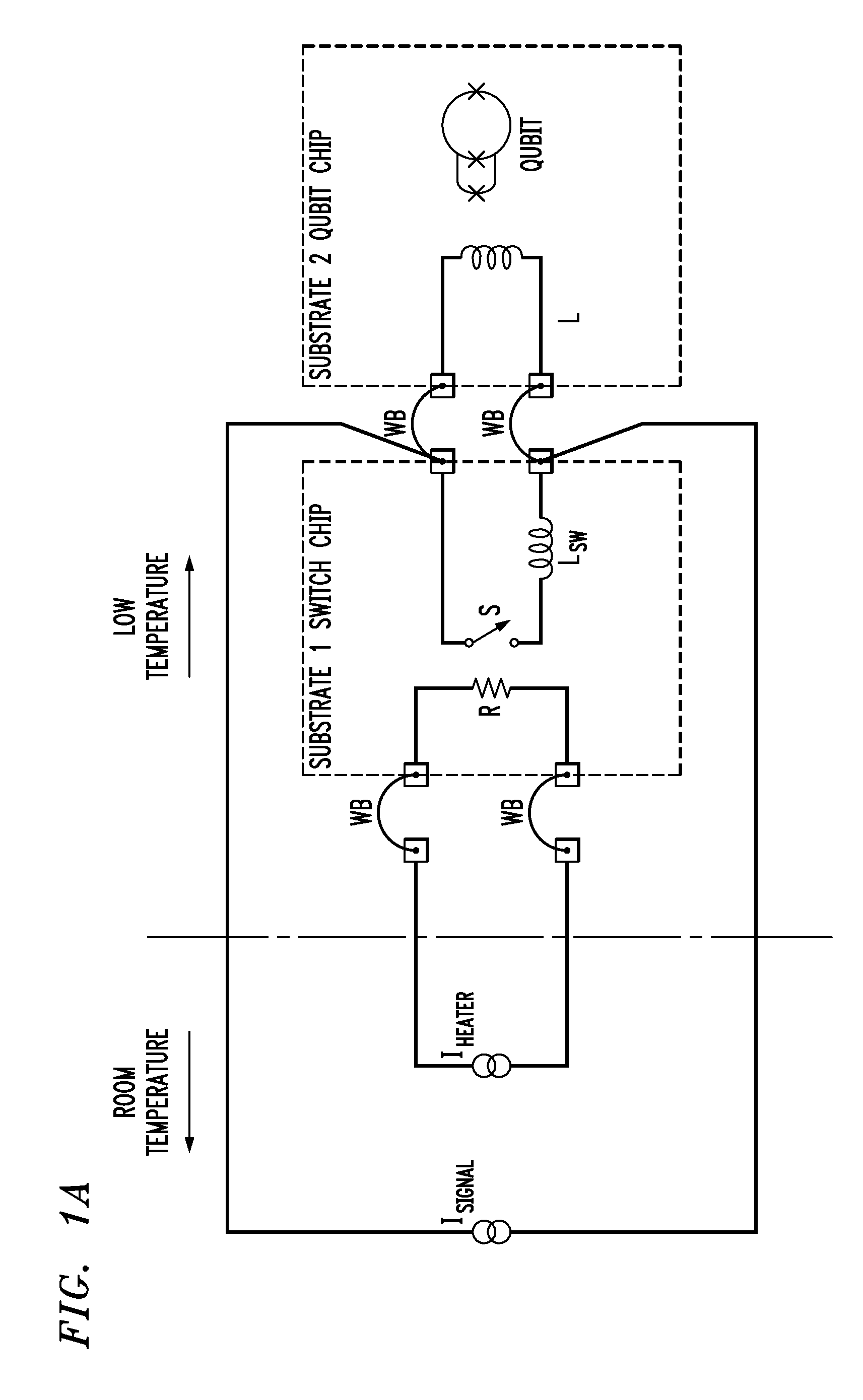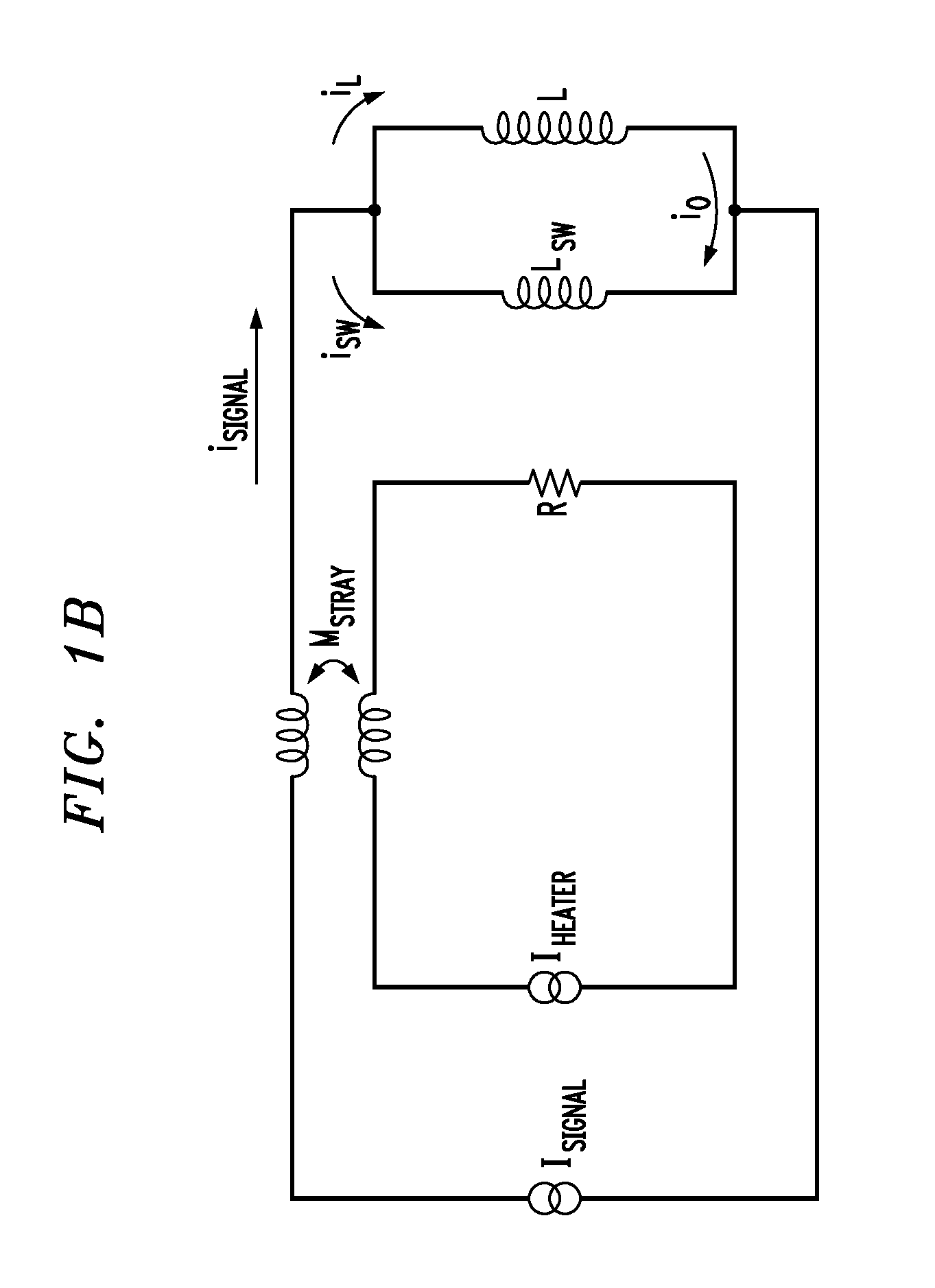Persistent Current Switch
a technology of persistent current and switch, which is applied in the direction of superconducting magnets/coils, instruments, magnetic bodies, etc., can solve the problems of heating the refrigerator and injecting undesirable noise into the device, and achieve the effect of improving the design and operation method of persistent current switches
- Summary
- Abstract
- Description
- Claims
- Application Information
AI Technical Summary
Benefits of technology
Problems solved by technology
Method used
Image
Examples
Embodiment Construction
[0021]In accordance with illustrative principles of the present invention, it has been realized that, for qubit experiments, the standard switch design (as described above in the background section) has three undesirable features. First, the cooling power of most dilution refrigerators at 20 mK is typically less than 10 μW. Therefore, a switch that dissipates 50 μW of power will warm the refrigerator and the qubit if it is “on” or “open” for too long. Second, the inductance of the typical switch is too large in comparison to the inductance of the current bias control line that sets the qubit. In this case, a large fraction of the noise current from the room temperature control electronics is coupled to the qubit when the switch is “off.” Finally, the mutual inductance between the heater circuit and the persistent current switch is large and therefore this limits ones ability to set the control current accurately.
[0022]A persistent current switch design according to illustrative prin...
PUM
 Login to View More
Login to View More Abstract
Description
Claims
Application Information
 Login to View More
Login to View More - R&D
- Intellectual Property
- Life Sciences
- Materials
- Tech Scout
- Unparalleled Data Quality
- Higher Quality Content
- 60% Fewer Hallucinations
Browse by: Latest US Patents, China's latest patents, Technical Efficacy Thesaurus, Application Domain, Technology Topic, Popular Technical Reports.
© 2025 PatSnap. All rights reserved.Legal|Privacy policy|Modern Slavery Act Transparency Statement|Sitemap|About US| Contact US: help@patsnap.com



